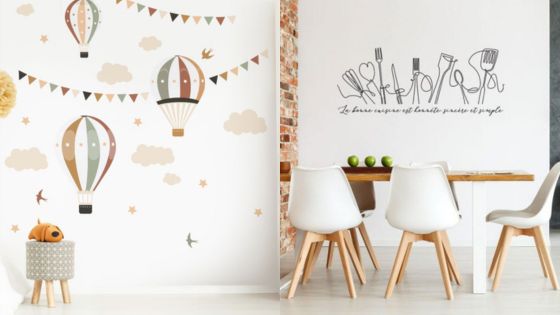
Crawl space encapsulation is the key to safeguarding homes from issues like moisture, mold, and pests, which can undermine a property’s integrity over time. By sealing this often-overlooked area beneath your home, homeowners can protect against these threats, enhancing both safety and energy efficiency. Proper encapsulation involves the installation of a vapor barrier, thorough sealing of all entry points, and may include additional steps like insulation or dehumidification, creating a controlled and healthy environment beneath the floor.
For those living in regions with high humidity or temperature variations, encapsulation is especially relevant. It minimizes moisture buildup which can lead to wood rot and structural damage, thereby extending the lifespan of the home. Besides protecting the structural elements, this treatment can result in lower energy costs by improving overall insulation, making it an attractive solution for eco-conscious homeowners.
The investment in crawl space encapsulation can significantly vary, typically ranging from a modest fee for small spaces to a more substantial cost for larger areas or those requiring repairs. Such costs are offset over time with enhanced energy efficiency and lower repair bills, making it a smart investment. Homeowners seeking expert advice and services may find a wealth of information on specialized resources.
What Is Crawl Space Encapsulation, and Why Is It Important?
Crawl space encapsulation is a method for sealing a home’s crawl space to create a controlled environment. This process plays a critical role in preventing moisture infiltration, pest infestations, and mold growth, ultimately improving the overall health and efficiency of a home.
Definition and Purpose
Crawl space encapsulation involves sealing the area beneath a house with materials like vapor barriers, insulation, and sometimes dehumidifiers. This procedure helps manage the environment by reducing moisture levels and deterring pests. Encapsulation may include sealing vents and cracks to further ensure a controlled atmosphere. This technique not only prevents structural damage but also enhances indoor air quality by preventing pollutants from entering the living spaces above.
Benefits of Crawl Space Encapsulation
Encapsulating a crawl space provides multiple advantages. One key benefit is the prevention of moisture accumulation, which reduces the risk of mold and mildew growth. This can be crucial for maintaining a healthy home environment. Moreover, it contributes to energy efficiency by improving temperature regulation, leading to potential savings on heating and cooling costs. Additionally, it protects the structural integrity of a home by keeping pests like termites at bay, thus preventing costly damages.
Factors That Influence the Cost of Crawl Space Encapsulation
Crawl space encapsulation costs can vary significantly due to several key factors. These include the size and condition of the crawl space, the materials selected for the project, and labor costs, which can fluctuate based on location. Each of these factors demands careful consideration when planning the encapsulation process to ensure a successful outcome and manageable budget.
Size of the Crawl Space
The size of the crawl space plays a crucial role in determining encapsulation costs. Larger spaces require more materials and extended labor time, increasing the overall expense. The cost is typically calculated on a per-square-foot basis, with prices ranging from $3 to $12. Consequently, homeowners with extensive crawl spaces should prepare for potentially higher expenses.
Additionally, the shape of the space can affect accessibility, which may increase labor costs if the layout is particularly challenging. Simple, straightforward crawl spaces are generally less expensive to encapsulate than those with twists and turns requiring additional customization.
Condition of the Crawl Space
The initial condition of the crawl space sets the stage for encapsulation expenditure. If the area is already dry and well-maintained, it will likely cost less to encapsulate, as minimal preparatory work is required. Conversely, spaces with existing issues like mold, structural damage, or pest infestations will necessitate repairs, driving up costs.
Mitigating these problems not only ensures the success of the encapsulation but also contributes to the long-term health and safety of the home. Addressing issues such as water damage or improper drainage prior to encapsulation can prevent further deterioration and provide a clean slate for the process.
Materials Used for the Project
The choice of materials significantly impacts encapsulation costs. High-quality vapor barriers, insulation, and sealants can enhance the effectiveness and longevity of the encapsulation but at a higher price. Typical material options include reinforced polyethylene or vapor retarders, which vary in durability and cost.
Homeowners should consider investing in premium materials, especially in climates prone to moisture, to ensure the encapsulation stands the test of time. Additionally, the environmental conditions of the property may influence the selection of materials, potentially increasing costs if specialized solutions are required.
Labor Costs and Regional Variations
Labor costs for crawl space encapsulation are another significant expense and can vary widely based on geographic location. Urban areas or regions with a high cost of living generally command higher labor rates than rural areas, affecting the total project cost.
Regional variations can also have an influence. Certain areas may have more stringent building codes or environmental challenges, necessitating specialized skills or additional work. Therefore, it is advisable for homeowners to seek estimates from multiple contractors to gauge competitive pricing in their area while ensuring expertise and quality.
Cost Breakdown: Encapsulating a 1,000-Square-Foot Crawl Space
Encapsulating a 1,000-square-foot crawl space involves various costs that homeowners should consider. These costs generally comprise essential materials and labor, optional upgrades, and possible financing opportunities to help manage expenses effectively.
Typical Costs for Encapsulation
The typical cost to encapsulate a 1,000-square-foot crawl space ranges from $2,000 to $4,000. This cost includes sealing materials such as vapor barriers and insulation. Hiring professionals may add to the expense, but can ensure a thorough job. Labor costs vary by region, often influencing the overall budget significantly.
Material costs make up a large portion of the expenses. Vapor barriers often cost between $0.50 to $0.70 per square foot, while insulation can range from $0.30 to $0.50 per square foot. Dehumidifiers, another common feature, typically range from $800 to $1,600.
Optional Add-Ons
Optional add-ons provide additional benefits but add to the total cost. Common extras include drainage systems, which help manage water accumulation, usually between $1,000 to $2,500. A sump pump is another valuable add-on, often costing $600 to $1,500.
Additional insulation or enhanced vapor barriers can further improve energy efficiency. These may range from $1,200 to $1,800. While these add-ons increase upfront costs, they can lead to greater long-term savings by reducing moisture-related issues.
Financing Options
Financing options can ease the burden of encapsulation costs. Some contractors offer installment plans, allowing payments over time. Home equity loans are another possibility, particularly for larger projects where upfront payment might be challenging.
Government programs or energy efficiency incentives may be available to reduce costs. These can vary based on location, so checking local resources is beneficial. Additionally, some utility companies provide rebates for energy-saving improvements.
Understanding these financing possibilities can help make encapsulation a more affordable project, ensuring the long-term benefits of a healthy, well-maintained crawl space without causing undue financial strain. Homeowners might consider resources like Basement By Burke for more specialized advice and financing options.

Pros and Cons of Crawl Space Encapsulation
Crawl space encapsulation involves sealing a crawl space with barriers and dehumidifiers to manage moisture and air quality. It offers benefits like improved air quality and reduced pest issues, but also comes with considerations like cost and installation challenges.
Pros of Crawl Space Encapsulation
Encapsulation transforms damp areas into dry, controlled environments, significantly improving indoor air quality. Preventing moisture reduces risks of mold growth, which can enhance overall home hygiene.
Sealing the crawl space also acts as a barrier against pests and allergens, contributing to a healthier living space. This process can positively impact home resale value by demonstrating maintained structural integrity.
Proper encapsulation can also lead to energy savings by stabilizing home temperatures, which may reduce heating and cooling costs.
Cons of Crawl Space Encapsulation
One primary consideration is the upfront cost, which can range from $5,000 to $15,000 based on the crawl space size and materials used. This initial investment may be significant, although long-term benefits can outweigh these expenses.
Installation can present challenges, especially in older or neglected spaces, requiring additional work to prepare the area. Maintaining the encapsulated space requires periodic checks to ensure barriers and dehumidifiers function effectively and sustain their benefits.
Some homeowners may find choosing the right materials and methods for their specific needs confusing, necessitating professional guidance. Overall, addressing these challenges is crucial to maximizing the advantages of crawl space encapsulation.
How to Decide If Crawl Space Encapsulation Is Right for You
Deciding whether to encapsulate a crawl space involves assessing key factors such as moisture issues, potential pest problems, and energy efficiency needs. Consider the costs, benefits, and unique aspects of your home to make an informed decision. Consulting experts can provide valuable insights tailored to individual circumstances, ensuring the best decision is made for your home situation.
Evaluate the Condition of Your Crawl Space
Assessing the current state of the crawl space is the first step. Look for moisture accumulation, which can lead to mold growth and structural damage. Puddles, dampness, or water stains are clear indicators of issues. Examine insulation and ventilation. Deteriorating insulation or inadequate ventilation might signal a need for encapsulation. Also, check for pest infestations, as rodents and insects thrive in unsealed crawl spaces.
Use a checklist to organize the inspection. Note any structural concerns, such as sagging floors or wood rot, as these might necessitate immediate attention. Documenting these findings will aid in understanding the necessity and urgency of encapsulation. If these problems are prevalent, encapsulation could offer significant benefits by creating a dry, controlled environment beneath the home.
Consulting with Professionals for Informative Insights
Engaging with experienced professionals can guide homeowners through the encapsulation decision-making process. Experts can conduct a thorough inspection and provide tailored recommendations based on specific findings. They assess the severity of moisture problems and suggest appropriate solutions, which may include moisture barriers, dehumidifiers, or additional insulation.
Cost estimates provided by professionals assist in weighing financial considerations. They can explain the long-term savings on energy bills that encapsulation might offer, further aiding the decision. Professionals also help compare various encapsulation materials and methods, ensuring the choice complements specific home needs. This expert consultation is instrumental in making a confident, informed decision.
Why Investing in Crawl Space Encapsulation Makes Sense
Investing in crawl space encapsulation offers numerous benefits that can significantly enhance the condition and value of a home. By sealing the crawl space, homeowners can prevent moisture and mold issues, which can lead to costly repairs and health problems. A properly encapsulated crawl space contributes to improved indoor air quality, creating a healthier living environment for residents.
The encapsulation process involves installing a thick, reinforced moisture barrier to cover the dirt floor and walls. This barrier works alongside a commercial-grade dehumidifier to maintain a dry space. Controlling humidity levels helps prevent pests, mold growth, and wood rot. Homeowners who invest in encapsulation can also enjoy energy savings due to reduced heating and cooling costs.
When considering crawl space encapsulation, several factors should guide the decision. Budget is important, as this is a one-time investment with long-term benefits. Additionally, the local climate and the current condition of the crawl space can influence the effectiveness of encapsulation. Areas prone to high humidity and moisture would gain the most from encapsulation efforts.
In terms of cost, encapsulation is an investment that varies depending on the size and complexity of the crawl space. It’s essential for homeowners to evaluate the potential savings on energy bills and the prevention of future repairs, which can offset initial costs.
Frequently Asked Questions About Crawl Space Encapsulation
Crawl space encapsulation involves sealing the area under a home to prevent moisture and improve energy efficiency. Understanding its cost, suitable materials, and insurance coverage is essential for homeowners. This section addresses common concerns regarding the process.
What are the potential drawbacks of encapsulating my crawl space?
Encapsulating a crawl space can present some challenges. Homeowners may need to address issues such as inadequate ventilation which can lead to poor air quality if not properly managed. Additionally, there’s the risk of upfront costs, although these are often offset by long-term savings on energy bills. Regular maintenance might also be required to ensure the encapsulation remains effective over time.
How much can I expect to spend on a professional crawl space encapsulation service?
The cost of professional encapsulation can vary significantly. On average, homeowners may spend anywhere from $5,000 to $15,000, depending on factors such as the size of the crawl space and the condition of the area. Costs might be higher if extensive repairs or drainage systems are necessary. It’s crucial to obtain detailed estimates from reputable contractors to understand the financial commitment involved.
What type of materials are recommended for crawl space encapsulation?
Recommended materials for encapsulating crawl spaces include high-quality plastic vapor barriers that provide moisture resistance. These barriers are typically used on floors, walls, and sometimes ceilings. Additionally, sealing tape and insulation are used to enhance the barrier’s effectiveness. Ensuring the use of durable materials is important to prevent moisture intrusion and to improve long-term efficacy.
Does homeowners insurance typically cover the cost of crawl space encapsulation?
Coverage for crawl space encapsulation under homeowners insurance policies can be limited. Most standard policies do not cover the cost of preventive measures like encapsulation. It’s advisable for homeowners to review their insurance terms or consult with their provider to clarify what is included. In some cases, additional coverage might be available through optional policy riders.
- 0shares
- Facebook0
- Pinterest0
- Twitter0



